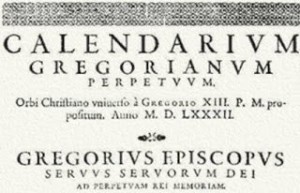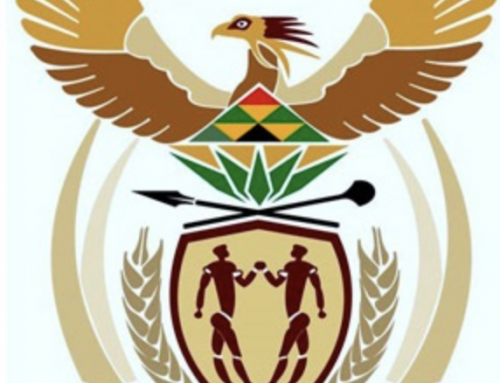 The change-over from the Julian to the Gregorian calendar in 1582 and 1752 had no influence on the calculation of time in South Africa, but the researcher wishing to continue his work in Great Britain will have to take this into account.
The change-over from the Julian to the Gregorian calendar in 1582 and 1752 had no influence on the calculation of time in South Africa, but the researcher wishing to continue his work in Great Britain will have to take this into account.
The Julian calendar was approved by the church convocation of Nicea in 325 A.D. According to this calendar the year began on 25 March. March was the first month of the year, December the tenth (as the name itself indicates) and February the twelfth. However, it later became apparent that this calendar year was slightly longer than the actual solar year. In every 131 years there was a difference of one day until, by the end of the sixteenth century, the calendar was ten days behind the solar year. To correct this discrepancy Pope Gregory XIII decided in 1582 to eliminate ten days from the calendar and the date was moved forward from 5 to 15 October. To avoid a recurrence of the discrepancy three intercalary days were to be left out every 400 years. It was thus decided that the last year of each century would not be a leap year, except when the first two figures of the year could be divided by four. The year 1600 was thus a leap year but 1700, 1800 and 1900 were not. The year 2000 will again be a leap year. Pope Gregory also determined that from then January 1 would mark the beginning of the year.
The Gregorian calendar was accepted by all countries on the Continent (except Russia ). Owing to the strained relations between the Pope and the British sovereign, England did not accept it. It was not put into operation there until 1752. By that time the discrepancy between the two calendars was already eleven days and the days 3 to 13 September of 1752 were eliminated from the calendar. However, even before 1752 many Englishmen had already begun to accept 1st January as the beginning of the year, so that double dates were in use for the days from 1 January to 24 March. Some-times this was even indicated by writing, for example: “15 February 1740/41.”
 In 1600 Scotland had already officially accepted 1st January as the beginning of the year.
In 1600 Scotland had already officially accepted 1st January as the beginning of the year.
The above-mentioned change in the calendar can give rise to problems for the researcher in England . If the age upon death of a person who was born before 1752 and died after that date is given in years, months and days, it is not known whether the eleven days that were eliminated from the calendar had been taken into account. The researcher must also remember that prior to 1752 the year began on 25 March and that it was possible, for example, that someone born on 26 March 1740 could have had a younger brother who was born a year later on 24 March 1740. Where the month is indicated by a figure, it is important to remember that before 1752 March was officially the first month and February the twelfth. Although the greater part of what is now known as the Netherlands changed over to the Gregorian calendar in 1582, the last four months of the year were sometimes abbreviated in the old Cape church registers as 7 ber (Sept.), 8 ber (Oct.), 9 ber (Nov.) and X ber (Dec.)”
[twitter name=”name”]
[facebook]





